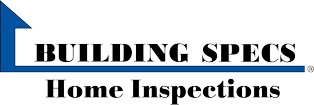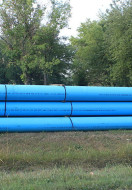Building Specs home inspections has qualified inspectors to swab and test your home for mold. Considerable recent media attention has been focused on the mold Stachybotrys chartarum (atra), particularly in light a number of infant deaths in Cleveland from pulmonary hemosiderosis associated with extensive contamination of residences with this fungi. This coupled with the fact that research indicates that contamination of structures with Stachybotrys fungi is much more common than originally believed has led to increased interest.
Stachybotrys thrives on water damaged cellulose rich materials in buildings such as sheet rock paper, ceiling tiles, cellulose containing insulation backing and wallpaper.
Almost without exception an extended saturation time and/or consistently high levels of humidity are required for this fungi to proliferate. Thus in a majority of cases where Stachybotrys is found in buildings the water damage event(s) that has occurred often goes unnoticed, or often as not, ignored by maintenance personnel that are unaware of the implications of such contamination.
In sharp contrast, single or sudden water damage events that occur where drying of water damaged material takes place more quickly tend to support the growth of more xerophilic fungi such as Penicillium and Aspergillus species.
The presence of Stachybotrys fungi in buildings is significant because of the mold's ability to produce mycotoxins, metabolites of fungi that can cause adverse health effects in humans and animals. Although most molds produce mycotoxins, those produced by Stachybotrys are extremely toxic, are suspected carcinogens and are immunosuppressive. Exposure to these toxins can occur through inhalation, ingestion or dermal exposure. Symptoms of exposure to Stachybotrys toxins include dermatitis, cough, rhinitis, nosebleeds, cold and flu symptoms, headache, general malaise and fever. Much of what is known about stachybotrystoxicosis has been gleaned from observation of exposed livestock.
Animals exposed to high levels through ingestion of contaminated forage die rapidly due to massive hemorrhaging, both internal and external. Exposure to lower levels over time leads to severe immune system suppression since afflicted animals often suffer from septicemia and succumb to a number of opportunistic infections.
As a general rule, air sampling for Stachybotrys yields unpredictable results because of a number of factors. First, when significant Stachybotrys contamination is present, other fungal contaminants are usually present as well. When conducting sampling using the Andersen N-6, generally other fungal contaminants will tend to overwhelm the Stachybotrys spores in culture, due to their more rapid growth rate, even when using selective media such as cellulose agar.
In addition, most commonly encountered fungal spores such as those of Aspergillus and Penicillium tend to be much more easily aerosolized than Stachybotrys thus further amplifying the recovery of the less significant contaminants. Typically under active growth conditions, the spores of Stachybotrys adhere to one another in a sticky sack, making passive aerosolization even more difficult. However, once a Stachybotrys contaminated surface has dried for an extended period of time the sticky sack desiccates and the spores are released much more readily.
Because of these factors, a visual inspection of the subject building is the best method of identifying a potential Stachybotrys contamination problem and requires a trained eye. Recognizing that Stachybotrys requires constant moisture and cellulose for growth helps the inspector narrow down potential sources. Stachybotrys typically appears as a sooty black fungus occasionally accompanied by a thick mass of white mycelia. Bulk or surface sampling of suspect materials should be conducted using caution and removed to the laboratory for identification by light microscopy. New inexpensive techniques are also currently available to measure specific mycotoxins produced by Stachybotrys and can assist the inspector in determining the toxicity of the strain isolated. Site-specific analyses should be discussed with the inspector's laboratory.







